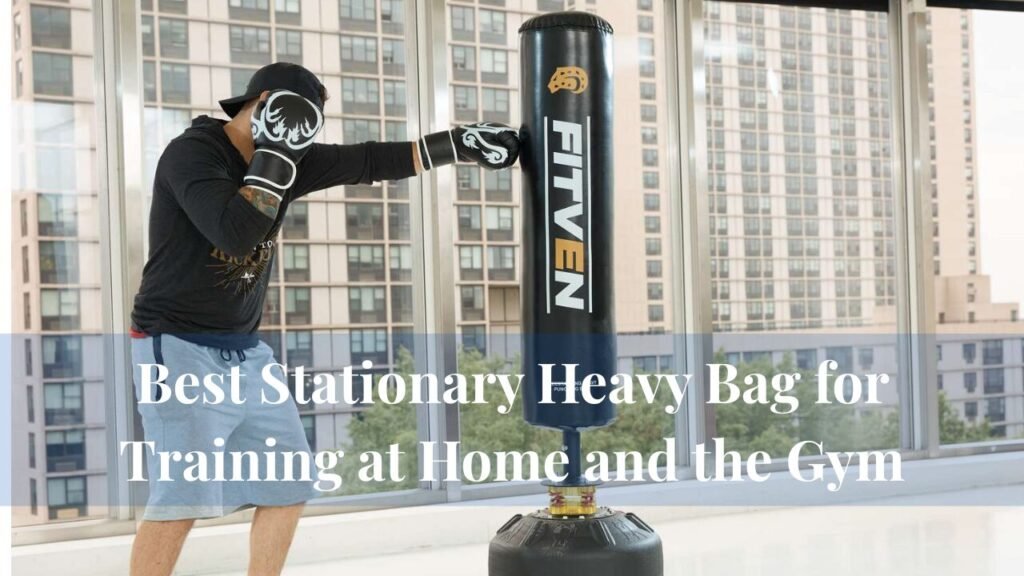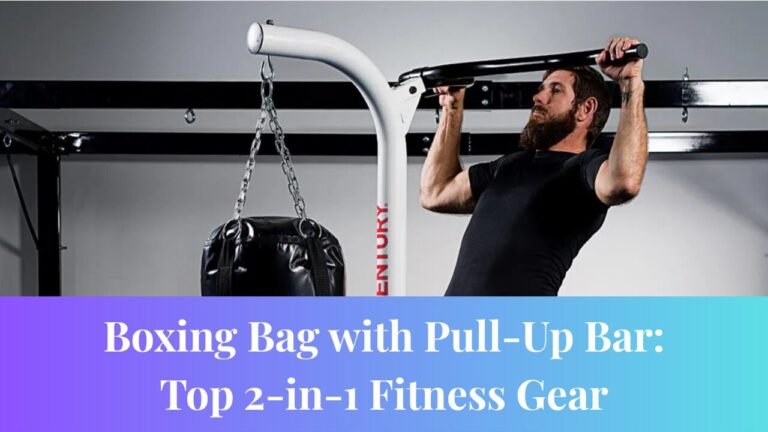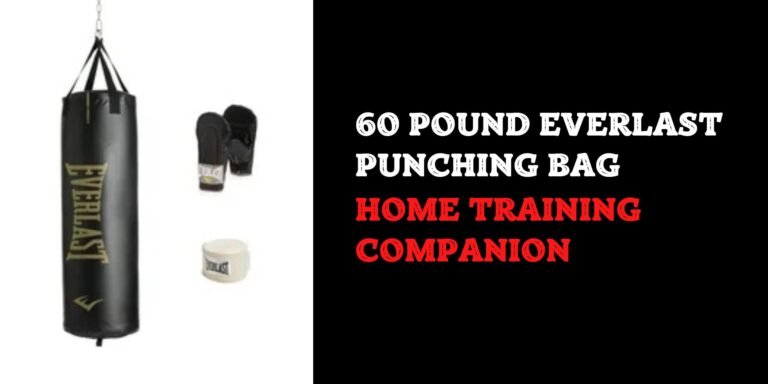Whether you’re a seasoned fighter, a martial arts enthusiast, or someone just starting their fitness journey, investing in the right punching bag can dramatically enhance your training outcomes. A stationary heavy bag serves as a powerful tool that allows you to refine your striking techniques with precision, power, and confidence. Whether you train in a professional gym or the comfort of your home, a properly selected heavy bag can elevate your skill, endurance, and overall physical conditioning. In this comprehensive guide, we will explore the numerous benefits of using a stationary heavy bag, key considerations for selecting the perfect bag, comparisons with freestanding alternatives, and practical tips for installation and maintenance. By the end, you will have all the knowledge necessary to choose the heavy bag that best fits your goals, available space, and preferred training style.
What is a Stationary Heavy Bag?
A stationary heavy bag is a robust, durable punching bag designed to remain anchored in a fixed position. Unlike freestanding bags, it is typically attached using a ceiling mount, wall bracket, or floor anchor, ensuring it remains steady during intense striking sessions. This immobility is essential for delivering powerful strikes without the bag swinging excessively, allowing for a realistic training experience that closely simulates hitting an opponent. Stationary heavy bags are widely used by boxers, kickboxers, Muay Thai fighters, and martial artists because they provide consistent resistance, help build proper technique, and enable the execution of complex combinations safely.
The fixed nature of stationary heavy bags also means you can practice explosive movements such as hooks, uppercuts, and knee strikes with confidence. Their consistent feedback helps you develop muscle memory, improve accuracy, and refine timing, which is crucial for combat sports and high-intensity fitness routines. Unlike freestanding bags that may tip or slide upon impact, a stationary heavy bag creates a dependable training environment where you can focus on both power and precision.
Why Choose a Stationary Heavy Bag?
Stationary heavy bags offer numerous advantages that make them a preferred choice for serious practitioners. One of the primary benefits is their superior stability and durability. Because these bags are anchored securely to a wall, ceiling, or floor, they remain firmly in place under heavy strikes. This stability allows practitioners to deliver strong punches, rapid combinations, and powerful kicks without the distraction of the bag shifting or toppling over. Over time, this contributes to more effective training sessions and reduces the risk of injury caused by unstable equipment.
Another significant advantage is the realistic resistance that stationary bags provide. When properly mounted, the bag absorbs strikes in a way that closely resembles hitting an actual opponent. This resistance not only aids in developing raw power but also helps train proper follow-through and technique. Freestanding bags, by contrast, often fail to offer this level of resistance and can result in inconsistent feedback, limiting the effectiveness of your training.
Stationary heavy bags are also space-efficient, which is particularly valuable for home gyms or limited training spaces. Wall or ceiling-mounted bags occupy minimal floor space while providing a versatile training area. This allows users to perform a wide range of techniques, including straight punches, hooks, kicks, and knees, without the need for bulky equipment that might otherwise clutter the room. Additionally, because they are less prone to falling or bouncing, stationary heavy bags generally have a longer lifespan than freestanding alternatives, making them a more durable investment for daily or high-frequency use.
Key Features
When selecting a stationary heavy bag, it is important to align your choice with your specific training goals and the space available for installation. One critical factor is the weight of the bag. Heavier bags, typically ranging from 100 to 150 pounds, are ideal for developing raw power and practicing strong, explosive strikes. They provide a solid resistance that challenges your strength and stability during every punch or kick. Lighter bags, usually between 60 and 80 pounds, are more suitable for those focusing on speed, agility, and fluid combinations, allowing faster movement and rapid-fire strikes without excessive resistance.
The material of the bag also plays a vital role in both durability and impact feel. Synthetic leather bags offer a combination of affordability and resilience, often being water-resistant and relatively long-lasting. Genuine leather bags represent the premium choice, providing a realistic feel and exceptional longevity, often lasting many years when properly maintained. Canvas bags, while less durable, can be a good option for beginners due to their lighter weight and lower cost, making them suitable for introductory training sessions.
The mounting system is another essential consideration. Ceiling mounts provide a full 360-degree range of motion, accommodating dynamic striking patterns and rotational movements. Wall brackets are ideal for smaller spaces, offering convenience and stability without requiring extensive ceiling access. Floor anchors provide additional security and control over bag movement, ensuring the bag stays firmly in place during powerful combinations. Incorporating a heavy-duty spring or swivel in the mounting system can enhance shock absorption and smoothen the bag’s movement, reducing stress on your joints and improving overall training efficiency.
Shock absorption is crucial to prevent injury and enhance training comfort. Bags filled with materials such as sand, rags, water, or specialized foam help absorb impact and reduce strain on the knuckles, wrists, and shoulders. The size and shape of the bag should also align with your training objectives. Standard cylindrical bags are versatile and suitable for practicing a broad range of techniques, including straight punches and hooks. Tear-drop bags provide angles conducive to uppercuts, knees, and clinch techniques, while uppercut-specific bags are designed to enhance your ability to deliver powerful upward strikes with proper form.
Top Stationary Heavy Bags in the Market
Several stationary heavy bags have garnered strong recommendations from fitness experts and experienced practitioners. The RDX Heavy Duty Punch Bag, for instance, is constructed from durable Maya Hide leather and comes with gloves, chains, and a swivel for easy installation. Weighing between 60 and 80 pounds, it is adjustable to suit a range of skill levels and is particularly effective for intermediate to advanced training, helping users develop explosive strikes and combinations.
The TITLE Boxing Leather Heavy Bag, crafted from 100% genuine leather, offers professional-level durability and performance. With a reinforced D-ring and heavy-duty chains, it supports intense daily use and is suitable for serious athletes seeking long-term investment in quality equipment. The Boxfit UK Training Bag, made from durable vinyl, provides custom size options and is hand-stitched for perfect density. This bag is ideal for home gyms and caters to both beginners and intermediate practitioners seeking a reliable training tool.
Stationary vs. Freestanding Heavy Bags: Key Differences
When comparing stationary and freestanding heavy bags, several key differences emerge that can influence your decision. Stationary bags excel in stability, offering a fixed position that supports high-intensity training without shifting. Freestanding bags, while more portable, often lack this level of stability and can tip or slide during powerful strikes. Stationary bags handle significant power more effectively, whereas freestanding bags are better suited for lighter strikes or casual training. Installation requirements also differ: stationary bags need secure mounting on a ceiling, wall, or floor, whereas freestanding bags offer simple setup with minimal effort. In terms of cost, stationary bags generally fall into a mid to high price range, reflecting their durability and construction quality, while freestanding options vary widely in price and performance. For practitioners aiming to maximize power, resistance, and realistic training feedback, stationary heavy bags are often the preferred choice.
Installation Tips for Stationary Heavy Bags
Proper installation of a stationary heavy bag is critical to ensure safety and equipment longevity. When attaching a bag to a ceiling, it is essential to anchor it to a strong ceiling joist or use a specialized bracket designed for heavy loads. Wall-mounted bags should be secured into studs or masonry to prevent loosening or detachment. For floor anchors, the base must be solidly anchored to provide stability and prevent excessive movement. Incorporating a heavy-duty spring or swivel can absorb impact and allow smoother movement, enhancing both safety and training realism. If you are uncertain about installation procedures or structural compatibility, hiring a professional ensures the bag is mounted correctly, minimizing the risk of damage or injury.
Maintenance Tips
To prolong the lifespan of your heavy bag and maintain optimal performance, consistent maintenance is essential. After each training session, wiping down the bag helps remove sweat and prevent material degradation. Rotating the bag periodically ensures even wear and tear across all sides, preventing localized damage. Regularly inspecting chains, brackets, and anchors is crucial for safety, with monthly checks recommended to ensure all mounting components remain securely fastened. Proper maintenance not only extends the life of your equipment but also safeguards against accidents and preserves the quality of your training experience.
Real User Experiences
Real-world experiences highlight the effectiveness and durability of stationary heavy bags. John M. from New York shares, “I installed the TITLE heavy bag in my garage two years ago and it’s held up like a champ. Still going strong despite daily use.” Similarly, Samantha R. from London remarks, “The RDX bag is perfect for both boxing and Muay Thai. Mounting took some time, but the payoff is worth it.” These testimonials underscore how high-quality stationary bags deliver long-lasting performance and support intensive training routines across various combat sports disciplines.
FAQs
How much does a stationary heavy bag weigh?
Most heavy bags weigh from 70 to 150 lbs. Heavier bags are better for developing power, while lighter bags aid in improving speed and agility.
Can I hang a heavy bag in my apartment?
Yes, but you need to anchor it to a strong ceiling joist or wall. Alternatively, a wall bracket or floor anchor can be a viable option.
Are stationary heavy bags good for kickboxing?
Absolutely. They’re perfect for delivering powerful combinations including knees, low kicks, and uppercuts without shifting upon impact.
How long do heavy bags last?
With proper care and maintenance, a well-constructed heavy bag can last 5 to 10 years or even longer.
Is a stationary heavy bag better than a freestanding bag?
For stability, resistance, and power training, a stationary heavy bag is typically the preferred option.
Conclusion
Selecting the right stationary heavy bag can significantly elevate your training, providing enhanced stability, realistic resistance, and durable construction. A properly chosen heavy bag allows you to maximize power, refine combinations, and develop explosive striking techniques with confidence and precision. Before making a purchase, consider your available space, specific training goals, and preferred discipline, whether boxing, kickboxing, Muay Thai, or general fitness. Leading brands such as RDX, TITLE, and Boxfit UK offer heavy bags designed to meet a wide range of needs, ensuring both beginners and advanced athletes find suitable options. Careful selection and safe installation will allow you to enjoy years of effective training in the comfort of your home or gym. For ongoing guidance on choosing the best training equipment, refining techniques, and structuring workouts, check back regularly. Your journey to improved performance and physical conditioning begins with the right gear, and a high-quality stationary heavy bag is an indispensable starting point for any serious practitioner.




